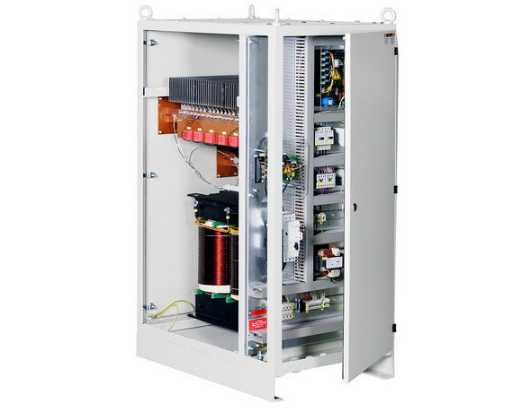
Source: American Plating Power
A rectifier is one of the largest investments any surface finishing company will make. One key factor that can extend the life of a surface finishing rectifier is the method used to cool it. Seacole’s team of surface finishing experts can help you decide which cooling method is appropriate for your process to help you protect your investment.
-
Forced-Air Cooling
Air-cooled rectifiers are ideal for processes with minimal risk of corrosion. They require facilities that are well-ventilated or that can accommodate a room that has clean, well-ventilated, conditioned air. Excellent ventilation ensures any fumes or harmful particles present in the air do not enter the rectifier. Conditioned air maintains an ideal temperature for cooling the rectifier.
In forced-air cooled systems, fans force air through the rectifier to cool the power components housed inside. These fans require routine maintenance, as do air inlet filters and heat sinks. With weekly or monthly inspections and a clean air supply, forced-air rectifiers can provide efficient cooling for years.
-
Closed-Loop Water Cooling
Water-cooled rectifiers are closed systems, making them ideal for harsh environments where corrosion may occur. In a closed-loop water cooling system, external water is piped into the rectifier’s internal water-to-water heat exchanger. This keeps the water temperature in the exchanger at approximately 40 degrees Fahrenheit so it can adequately cool the power supply without creating condensation within the system.
Closed-loop cooling systems require minimal maintenance as long as the temperature of the water is kept at optimal levels. Most closed-loop systems require visual inspection of water lines to check for leaks that could cause downtime or damage the rectifier.
-
Oil Cooling
Though a larger up-front investment, oil-cooled rectifiers are extremely reliable and require nearly no maintenance. They are ideal for harsh environments, making them an excellent choice for processes that include electroplating or corrosive chemistries. The power components of oil-cooled rectifiers are submerged in non-conductive oil that’s cooled by heat-dispersing fins. The entire system is closed off, so it’s not vulnerable from particles and fumes in the surrounding air.
Minimal maintenance for oil-cooled systems includes changing the oil and maintaining optimal oil levels within the rectifier. Some components may also need to be replaced periodically. But with minimal routine maintenance, an oil-cooled rectifier can stay up and running for years.
It Pays to Protect Your Investment
Understanding the cooling requirements of your rectifier helps protect your investment. Proper maintenance and cooling extends the life of the rectifier and can lead to less downtime for your process line. Cooling can also reduce expenses related to corrosion and dirt within your rectifier, extending its life further.
To learn more about your rectifier cooling options, contact the surface finishing experts at Seacole today.


